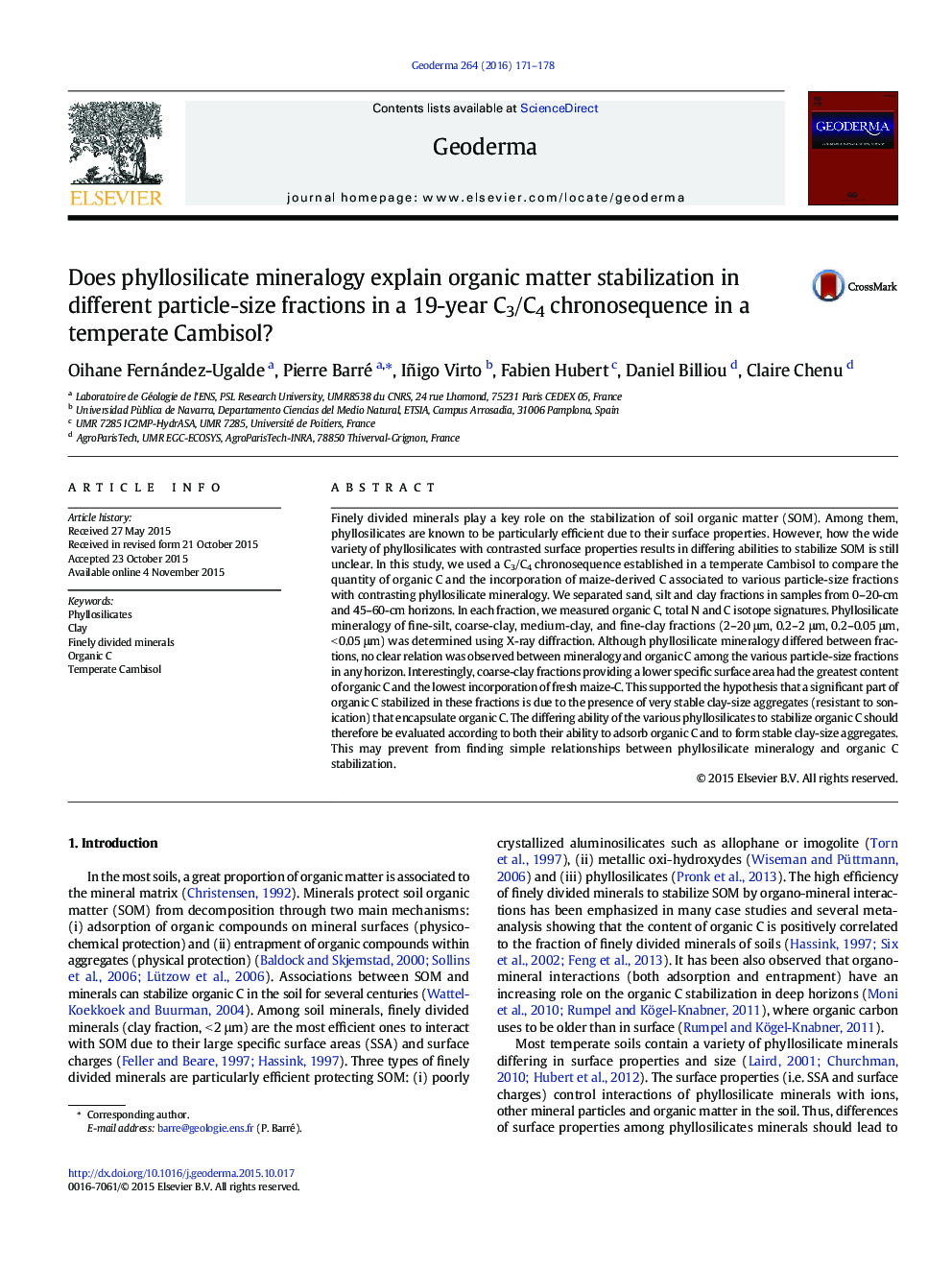| Article ID | Journal | Published Year | Pages | File Type |
|---|---|---|---|---|
| 4573094 | Geoderma | 2016 | 8 Pages |
•Phyllosilicate mineralogy differ significantly between particle-size fractions.•No clear relation between phyllosilicate mineralogy and organic C was observed.•Stable clay-size aggregates likely contribute significantly to SOC protection.•Adsorption and entrapment both contribute to C stabilization in clay-size fractions.•This prevents to find a simple relation between clay mineralogy and C stabilization.
Finely divided minerals play a key role on the stabilization of soil organic matter (SOM). Among them, phyllosilicates are known to be particularly efficient due to their surface properties. However, how the wide variety of phyllosilicates with contrasted surface properties results in differing abilities to stabilize SOM is still unclear. In this study, we used a C3/C4 chronosequence established in a temperate Cambisol to compare the quantity of organic C and the incorporation of maize-derived C associated to various particle-size fractions with contrasting phyllosilicate mineralogy. We separated sand, silt and clay fractions in samples from 0–20-cm and 45–60-cm horizons. In each fraction, we measured organic C, total N and C isotope signatures. Phyllosilicate mineralogy of fine-silt, coarse-clay, medium-clay, and fine-clay fractions (2–20 μm, 0.2–2 μm, 0.2–0.05 μm, < 0.05 μm) was determined using X-ray diffraction. Although phyllosilicate mineralogy differed between fractions, no clear relation was observed between mineralogy and organic C among the various particle-size fractions in any horizon. Interestingly, coarse-clay fractions providing a lower specific surface area had the greatest content of organic C and the lowest incorporation of fresh maize-C. This supported the hypothesis that a significant part of organic C stabilized in these fractions is due to the presence of very stable clay-size aggregates (resistant to sonication) that encapsulate organic C. The differing ability of the various phyllosilicates to stabilize organic C should therefore be evaluated according to both their ability to adsorb organic C and to form stable clay-size aggregates. This may prevent from finding simple relationships between phyllosilicate mineralogy and organic C stabilization.
